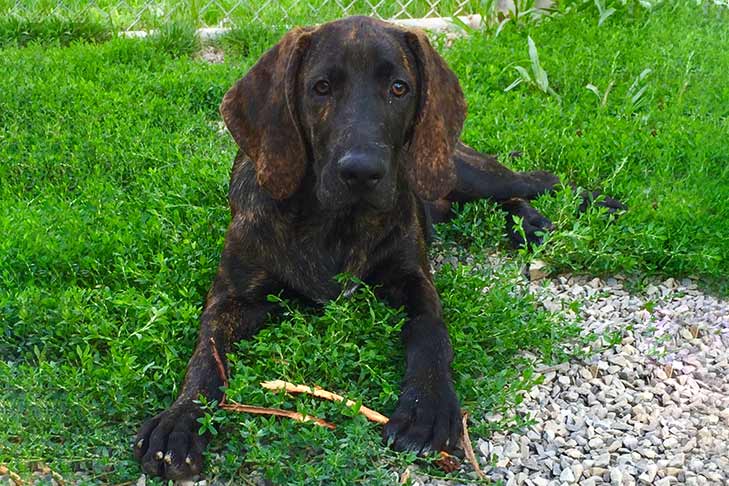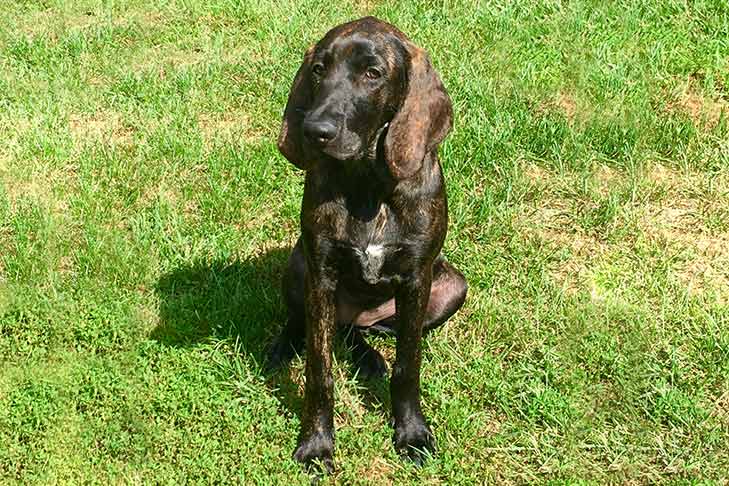The Plott is a tough, persistent hunting dog who is a laid-back gentleman at home but fearless, implacable, and bold at work. The Plott is a hound with an intriguing name and an interesting history. The state dog of North Carolina is this striking scenthound. The hound with the unusual name—which we’ll get to—and interesting past—which we’ll also get to—is a sleek, long-tailed, light-footed predator that can reach a height of 25 inches at the shoulder. The flamboyant coat is available in a variety of brindle-stripe patterns, as well as some solid hues, ranging from black with gold flecks to fiery orange and russet. The black leather of the nose, lips, and eye rims contrasts with the medium-length gracefully hanging ears, creating a look that is both curious and assured.





 Health
Health Grooming
Grooming Exercise
Exercise Training
Training Nutrition
Nutrition